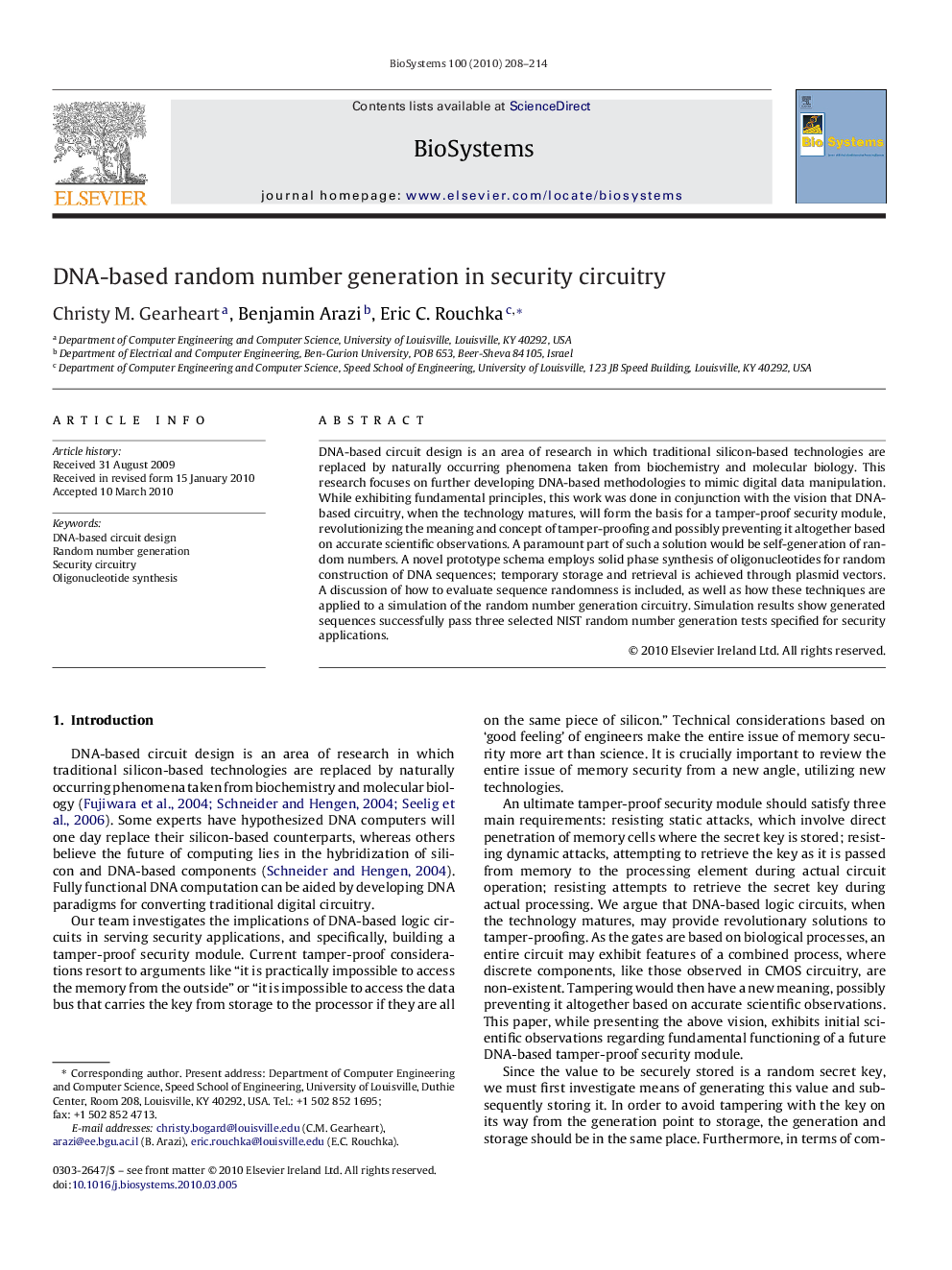| کد مقاله | کد نشریه | سال انتشار | مقاله انگلیسی | نسخه تمام متن |
|---|---|---|---|---|
| 2076329 | 1544995 | 2010 | 7 صفحه PDF | دانلود رایگان |

DNA-based circuit design is an area of research in which traditional silicon-based technologies are replaced by naturally occurring phenomena taken from biochemistry and molecular biology. This research focuses on further developing DNA-based methodologies to mimic digital data manipulation. While exhibiting fundamental principles, this work was done in conjunction with the vision that DNA-based circuitry, when the technology matures, will form the basis for a tamper-proof security module, revolutionizing the meaning and concept of tamper-proofing and possibly preventing it altogether based on accurate scientific observations. A paramount part of such a solution would be self-generation of random numbers. A novel prototype schema employs solid phase synthesis of oligonucleotides for random construction of DNA sequences; temporary storage and retrieval is achieved through plasmid vectors. A discussion of how to evaluate sequence randomness is included, as well as how these techniques are applied to a simulation of the random number generation circuitry. Simulation results show generated sequences successfully pass three selected NIST random number generation tests specified for security applications.
Journal: Biosystems - Volume 100, Issue 3, June 2010, Pages 208–214